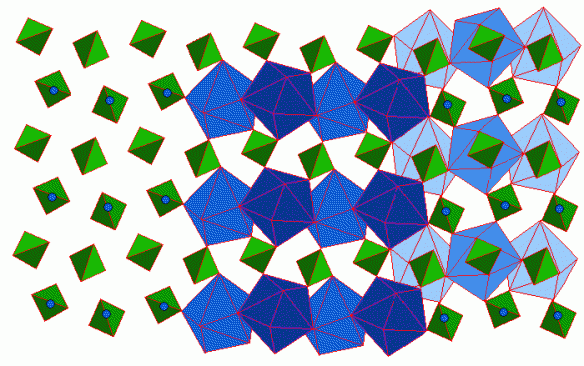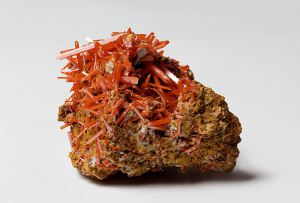The crystal structure rainbow – Orange crocoite
What does it look like?

The Corcoite structure, drawn by Steven Dutch. Lots more views of this structure here http://www.uwgb.edu/DutchS/Petrology/CrocoiteStructure.HTM
The green tetrahedrons represent the co-ordination of the chrominum atoms, and the blue shapes represent the 9 co-ordinated lead atoms. The oxygen atoms sit between these.
What is it?

A specimen of crocoite from the Willems Miner Collection, picture by J. J. Harrison
So we can'’t be a group of Australian crystallographers and not write about a mineral called Crocoite, can we? It's also pretty appropriate in this 'rainbow crystal structure' series, as this material (which is chemically the same as lead chromate used in the chrome yellow pigment), nicely bridges between Red and Yellow in colour. Despite its almost reptilian name and the fact that deposits of crocoite are found in Tasmania, this mineral is not named after any crocodiles. It's actually named for its colour, with krocus the Greek for saffron, which came to the mind of François Sulpice Beudant when he discovered crocoite in the Russian Urals in 1832.
Where did the structure come from?
The structure is crocoite is # 9015975 in the Crystallography Open Database.






